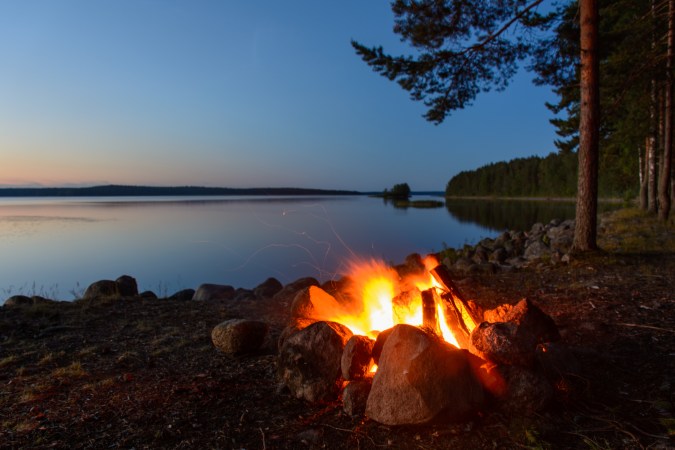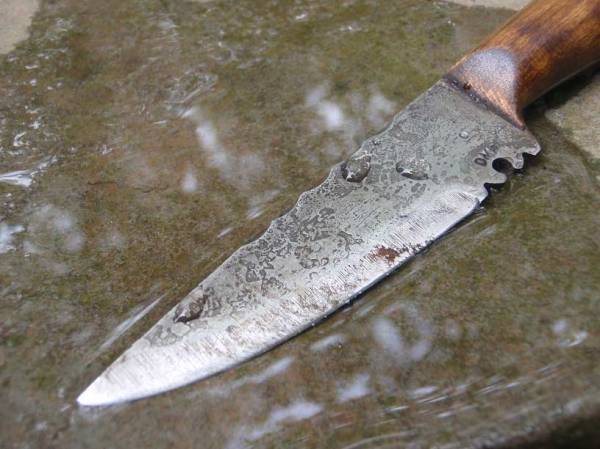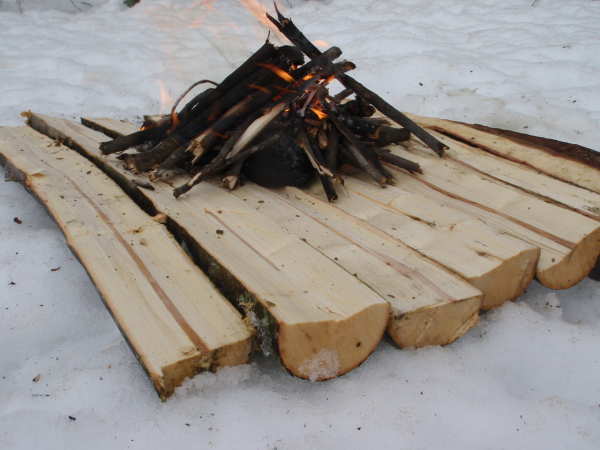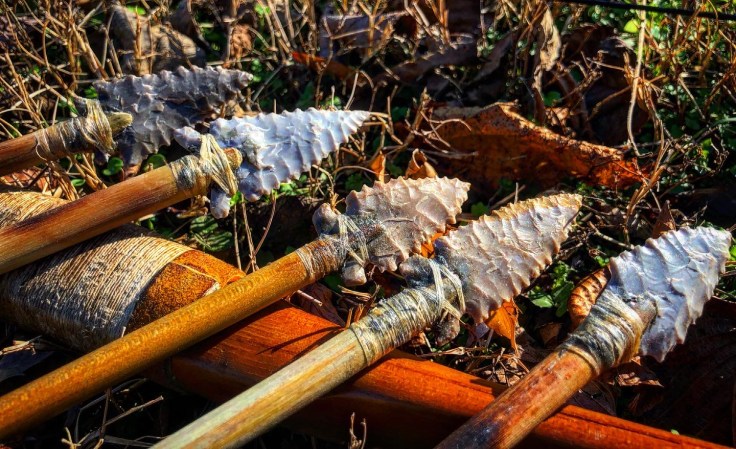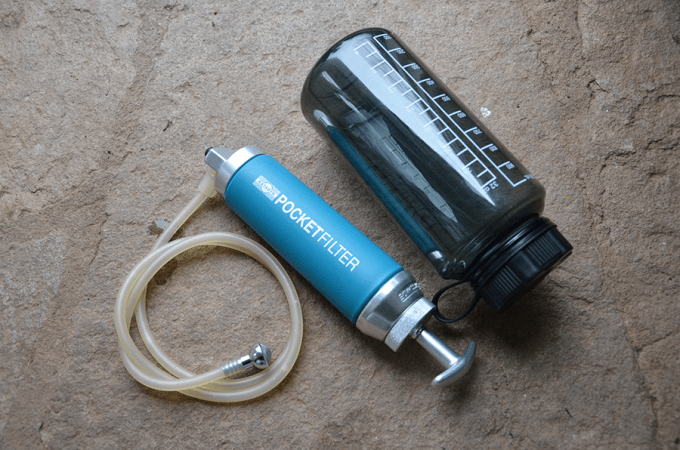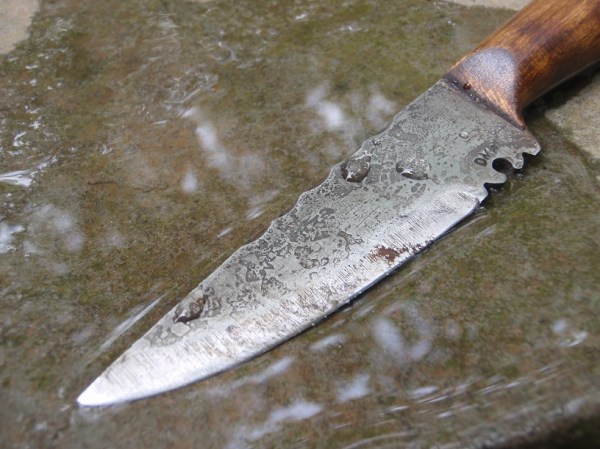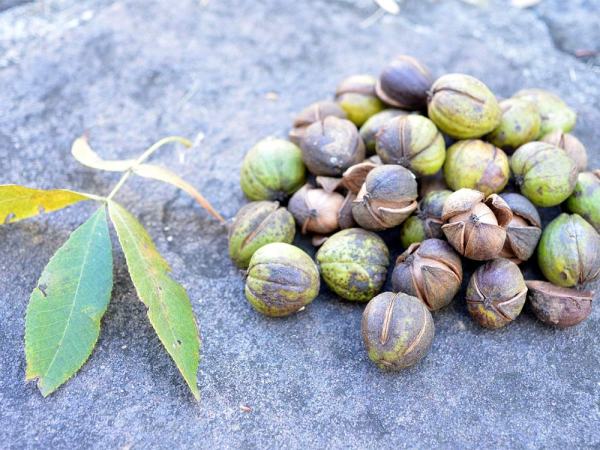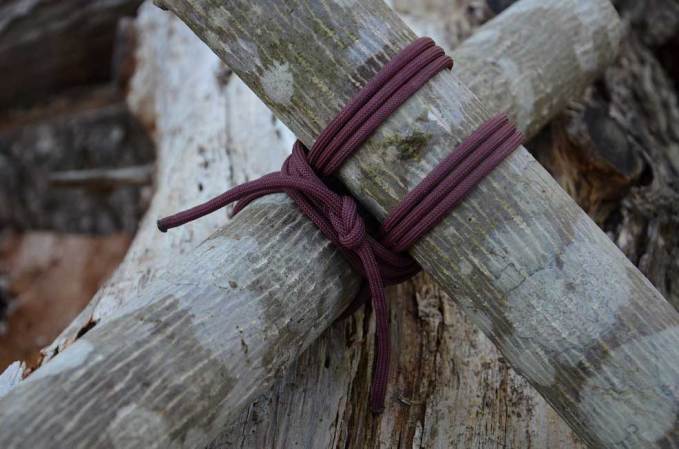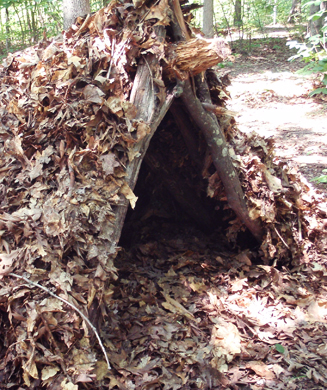There’s nothing mysterious or strange about fatwood. But many people seem to know about fatwood only by reputation, and not from actual experience in finding it or using it.
Fatwood is known by many names: “fat lighter,” “lighter knot,” “rich lighter,” and “heart pine” are just a few. Whatever you choose to call it, fatwood comes from the same place, the heartwood of pine trees and a few other resinous conifers. As a tree stump dies, the pine resin can become concentrated in the heartwood, which then becomes hard and very rot resistant. Once this happens, the center of the stump and it’s tap root can be great sources of fatwood. You may also get lucky and find fatwood in the joints where pine limbs intersect with the trunk.
Fatwood is prized because it lights readily with an open flame, it burns very well and it burns even in wet weather. The resin in the wood makes fatwood almost waterproof and very flammable. The fatwood can be cut and split into small sticks for kindling, or carved into shavings for tinder.
To find yourself a ready supply of this fire starting wonder, look through a pine forest until you come across a stump with only the center remaining. This center (heart wood) should seem solid. Cut off some pieces of this wood, and give them a look and a sniff. If they look like perfectly good wood (not rotten at all), then smell the pieces. If it really is fatwood, it will smell strongly of pine cleaner and resin, with the sharp odor of turpentine. Most resinous pines can produce fatwood, but here in Virginia, fatwood is most commonly associated with Longleaf pine and Virginia pine.
If you can’t get out into the woods to try out fatwood, you can probably pick up a bundle of fatwood sticks at the local home improvement store, usually sold where they keep the chimney and stove merchandise. Or you can try some from the web.
**Fatwood Shavings **
A great kindling helper can be made from Fatwood shavings. You can carve off slivers of Fatwood with your knife, or cut shavings from fatwood sticks with a pencil sharpener as one of our readers recommended in an earlier post.
If you want to avoid the trouble, you can also buy fatwood shavings in a can. The product is called Tinder Dust and is produced by a company called Light My Fire. Just remember that all fatwood shavings (homemade or store bought) light on fire best from an open flame, not from sparks.
Good luck finding fatwood. Please tell us in the comments about the different ways you use it.
